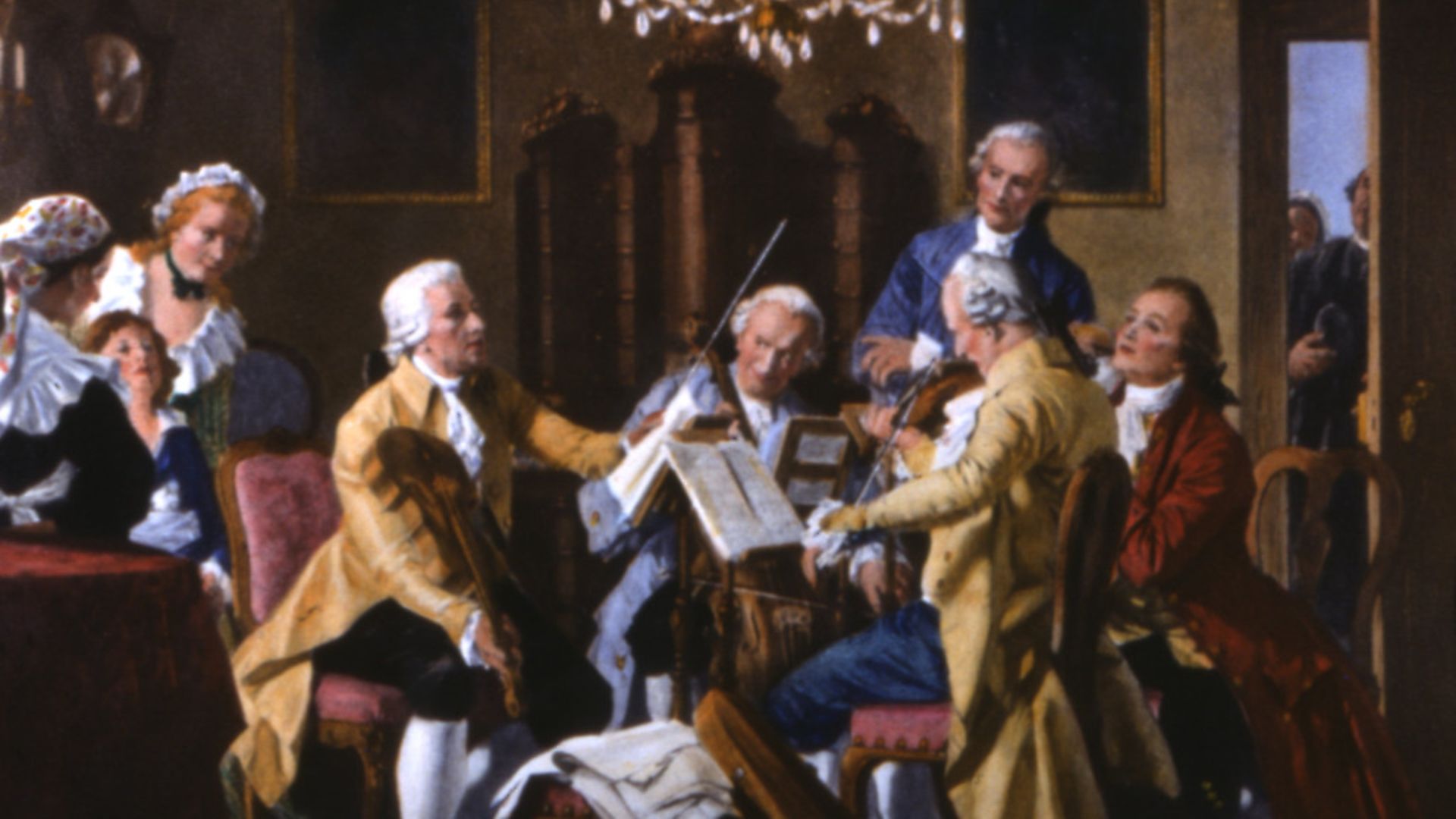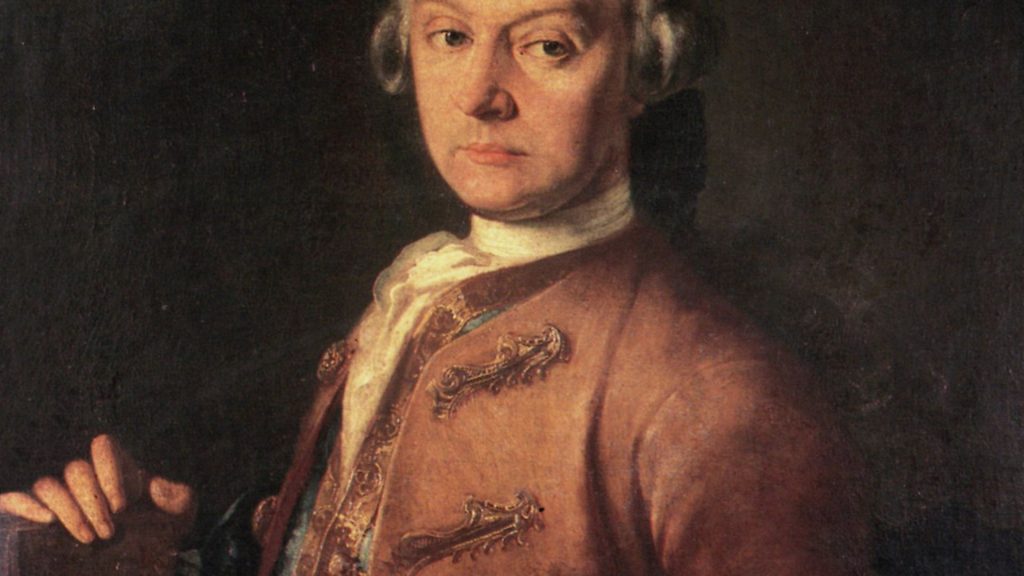
As baroque peaked, the classical era beckoned. SOPHIE DEBOICK reports on a year of big names and shifting tastes.

The boundaries of thought and the borders of the known world were expanding in 1750. As Spanish, Portuguese, French and British colonialists dug in on the American continents, new regions were ‘discovered’ by the Europeans and missionaries worked to convert the indigenous peoples.
The transatlantic slave trade was a key part of colonial economies, but in April, Gabonese captives on board the slave ship the Snow Ann staged one of the few successful slave rebellions, returning the ship to Cape Lopez. As the newly-established African Company of Merchants took over control of the British slave trade from the Royal African Company, London merchants lost their dominance and traders from Liverpool and Bristol got a look in, rapidly accelerating the growth of those cities, while the continued growth of London was symbolised by the opening of Westminster Bridge, only the city’s second crossing over the Thames in more than 600 years.
The Industrial Revolution was just around the corner, but a revolution of ideas was already afoot, as Jean-Jacques Rousseau won the prize of the Academy of Dijon for his Discourse on the Arts and Sciences, his first successful philosophical work.
The arts were thriving. War broke out on the London stage as rival productions of Romeo and Juliet were staged simultaneously, with David Garrick at Drury Lane going head-to-head with Spranger Barry at Covent Garden. When King Louis XV responded to the spirit of the Enlightenment and displayed paintings from the royal collection at Paris’ Luxembourg Palace, it established a forerunner to the Louvre.
In music, that the baroque had reached its peak and the classical era was beginning was symbolised by the death of Bach, aged 65, in July 1750. Having spent the last decade of his life compiling his Great Eighteen Chorale Preludes, he dictated the final three, BWV 666, 667 and 668, to his student and son-in-law Johann Christoph Altnikol.
The last, known as the ‘deathbed chorale’, would be published as an appendix to his unfinished The Art of Fugue the following year, its title extremely apt: Vor deinen Thron tret’ ich hiermit (‘Before your throne I now appear’).
Handel, born only a month before Bach, was still firing on all cylinders. Following the spectacular debut of his Music for Royal Fireworks in April the previous year, and his first benefit concert for the Foundling Hospital the following month, a performance of the Foundling Hospital Anthem, culminating in his Hallelujah chorus, Handel was making a foray into a new field in 1750.
His incidental music for Tobias Smollett’s masque-style play Alceste, based on Euripides’ Athenian tragedy about a loyal wife who sacrifices herself for her husband before being rescued from the underworld by Hercules, was written between Boxing Day 1749 and the first week of 1750 and was the only theatre project the composer ever completed.
Although the play was rehearsed, it was never performed, but Handel was not averse to recycling musical pieces and would use parts of the compositions in later revivals of Alexander Balus and Hercules, as well as the oratorio The Choice of Hercules, the last of his classically-themed English oratorios, which he wrote in June and July 1750. While the grand opening symphony accompanied Hercules’ return from the underworld in the original play, it neatly became the music for the entrance of the character in the new drama.
In March, Handel premiered another new work, the tale of the Christian martyr Theodora, featuring the celebrated castrato Gaetano Guadagni as Didymus, the Roman soldier converted by the saint.
Guadagni was a colourful figure who had arrived in London just a couple of years before but had quickly made a name for himself, not least for his alleged sexual exploits. Eighteenth-century music historian Charles Burney branded him “a wild and careless singer” but recognised his excellence, nonetheless, and as well as originating the role of Didymus, Guadagni appeared in revivals of Handel’s Saul, Judas Maccabeus and Samson during the early part of 1750.
Perhaps Guadagni’s greatest honour was Handel’s 1750 revision of the Messiah to include arias written specifically for him – Thou art gone up on high and But who may abide.
He starred in the Convent Garden revival of the Messiah that April, as well as in the full performance of the work at the Foundling Hospital, which was such a roaring success it was performed again two weeks later and established a tradition of an annual concert, giving the piece a longevity none of Handel’s other oratorios enjoyed.
All this frenetic activity was shortly to come to an end for Handel, however, as he suffered a carriage accident in August while travelling in the Netherlands. Although he was sufficiently recovered to perform organ recitals for the Prince of Orange before returning to London in December, his health declined thereafter, first beginning to lose his sight the following year, and he died in 1759.
Just as the demise of Bach and Handel signalled the end of the baroque, the rise of new composers gave a presentiment of the classical style to come. Haydn had risen to some prominence as a boy chorister at St Stephen’s Cathedral in Vienna, but by the time he was 17, his voice had changed and the Holy Roman Empress Maria Theresa herself complained that he sang “like a crow”.
This, coupled with an alleged prank involving snipping off a fellow chorister’s pigtail, resulted in him being thrown out onto the streets. Hard times followed, and he later wrote “For eight whole years I was forced to eke out a wretched existence by teaching young people. Many geniuses are ruined by this… because they lack time to study”. But he was not to be discouraged, noting that “I carried on with my zeal for composition during the night”, and his fortunes would soon change.
In 1752 Haydn fell in with Nicola Porpora, the singing teacher who mentored the most celebrated castrato of the age, Farinelli, who was knighted by his number one fan, King Ferdinand VI of Spain, in 1750. Haydn began working as Porpora’s accompanist and said that it was from him that he learned “the true fundamentals of composition”. But he had already completed significant compositions by that time. His earliest known mass, the Missa Brevis in F, was composed in 1750, when he was just 18 years old, and that spring he journeyed to the Benedictine pilgrimage church in Mariazell to ask the choir to perform some of his pieces, likely this mass or his first Lauda Sion hymns.
He cut a sorry figure in 1750, but Haydn would go on to impressive patronages, to contribute to the establishment of the forms and styles for the symphony and the string quartet, and ultimately become the first great master of the classical style.
Haydn’s great professional friendship would come 30 years later when he met another of the three ‘Viennese Classics’, Mozart, who was 24 years his junior. But Mozart’s mark on music was already being set in train in 1750, six years before his birth. That year, his father Leopold Mozart, was 31 and a violinist at the court of the Prince-Archbishop of Salzburg, and he composed his Serenade in D major, typical of the clear and balanced style of the time.
Although his accomplishments as a composer are debated, he would make an undoubted mark on music through his twin successes of 1756: the publication of his widely-used Treatise on the Fundamental Principles of Violin Playing, and the birth of his son, Wolfgang Amadeus. The youngest of seven children, five of whom had already died in infancy, Wolfgang was the focus of all Leopold’s energies once he realised his potential, pouring his heart and soul into his musical education and ultimately abandoning his own composition work to concentrate on his son’s career.
Later assessments have seen Leopold variously as a tyrant who lived vicariously through his son or as a loving father who wanted to see him fulfil his potential in a way he hadn’t. The birth of Mozart’s great rival, Antonio Salieri, in August was another way in which 1750 obliquely shaped the composer’s future life.
Handel had stopped writing opera after 1741, a sign that serious opera was on the decline as the Enlightenment insisted on rationalisation and democratisation. There was a greater simplicity and focus on truth in music and drama, but humour also became more popular.
From Pergolesi’s 1733 subversive opera buffa, La Serva Padrona, first performed in London in 1750, to John Gay’s 1728 comic ballad opera, The Beggar’s Opera, which in 1750 became one of the earliest musical comedies to be performed in America, appearing at the off-Broadway Nassau Street Theatre in December, there was a general loosening up that made the works of the recent past look very staid indeed.
While the age of revolution was a quarter of a century away, a revolution in the arts could already be glimpsed in these early signs of the democratisation of popular entertainment.










